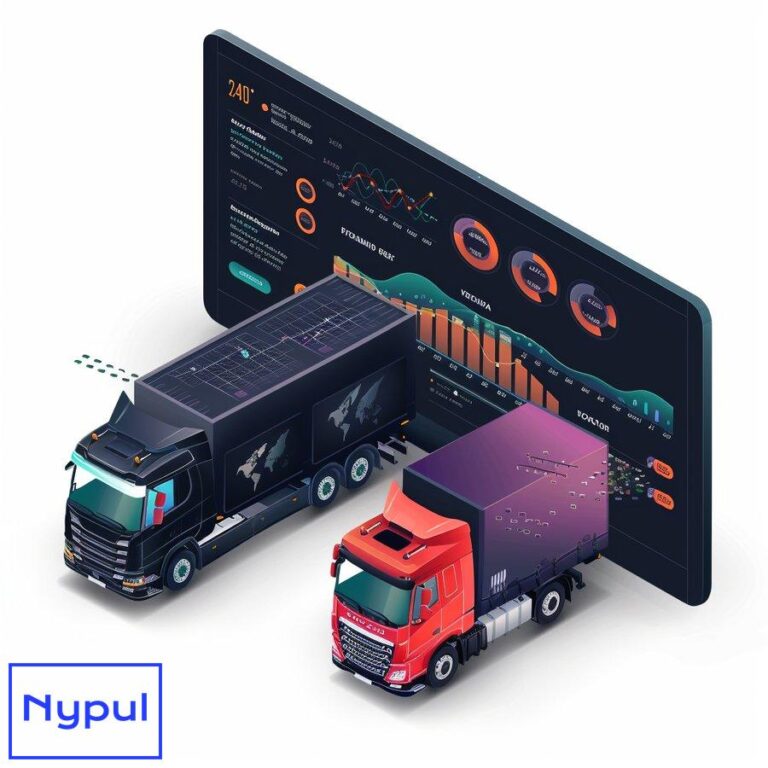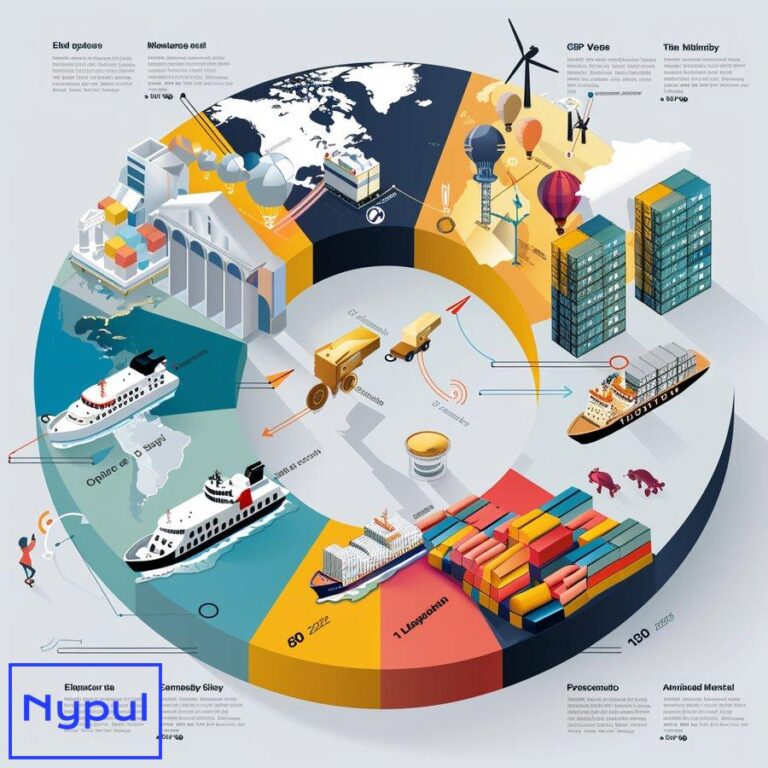How to Evaluate Delivery Performance
What is delivery performance and why is it crucial?
Delivery performance refers to the ability of an organization to fulfill order requests accurately and timely, ensuring that products or services reach customers as promised. This performance is vital for maintaining customer satisfaction, loyalty, and competitive advantage in the market. The effectiveness of delivery performance is influenced by several factors, including operational capacity, resource allocation, and the efficiency of logistics processes.

Understanding delivery performance is essential for several reasons:
-
Customer Satisfaction: Timely and accurate deliveries enhance customer experience, fostering repeat business and positive word-of-mouth.
-
Operational Efficiency: Evaluating delivery performance helps identify inefficiencies and areas for improvement, leading to optimized resource use and reduced costs.
-
Market Competitiveness: In a saturated market, businesses that excel in delivery performance can differentiate themselves, attracting more customers.
-
Financial Impact: Improved delivery performance can lead to lower operational costs. Companies that optimize their supply chains often experience a 15% reduction in delivery costs compared to those that do not.
In summary, delivery performance is a critical component of logistics that directly impacts customer satisfaction, operational efficiency, and overall business success.
How do you measure delivery performance effectively?
Measuring delivery performance involves tracking various key performance indicators (KPIs) that provide insights into the effectiveness of logistics operations. Effective measurement requires a systematic approach to data collection and analysis.
Key Performance Indicators (KPIs)
-
On-Time Delivery Rate: This metric measures the percentage of orders delivered by the promised date. A high on-time delivery rate indicates reliability, while a low rate suggests issues in logistics.
-
Order Accuracy: This KPI tracks the percentage of orders delivered without errors. High order accuracy reflects well on the fulfillment process and minimizes returns.
-
Average Delivery Time: This measures the average time taken to complete deliveries. Analyzing this metric helps identify bottlenecks in the delivery process.
-
Delivery Cost per Order: This KPI assesses the cost-effectiveness of the delivery process by calculating the total delivery costs divided by the number of orders delivered.
-
Customer Feedback and Satisfaction Scores: Gathering customer feedback through surveys can provide qualitative insights into delivery performance.
Data Collection Methods
-
Automated Systems: Utilizing software solutions that automatically track and report delivery metrics can enhance accuracy and reduce manual errors.
-
Surveys and Feedback Forms: Regularly collecting customer feedback can provide insights into areas of improvement.
-
Logistics Management Software: Implementing comprehensive logistics management systems can streamline data collection and reporting.
Analyzing Data
Once data is collected, it must be analyzed to identify trends, strengths, and weaknesses in delivery performance. Regularly reviewing these metrics allows organizations to make informed decisions and implement necessary changes.
Which metrics should you track to evaluate delivery performance?
Tracking the right metrics is essential for a comprehensive evaluation of delivery performance. Below are several key metrics that organizations should monitor:
1. Total Number of Completed Deliveries
This metric indicates the overall output of the delivery process over a specific period. It serves as a foundational measure for assessing other performance metrics.
2. On-Time Delivery Percentage
This metric reflects the reliability of the delivery process. A high percentage indicates that the organization meets customer expectations consistently.
3. Order Accuracy Rate
This measures the effectiveness of the fulfillment process by calculating the percentage of orders delivered correctly. High order accuracy reduces returns and enhances customer satisfaction.
4. Average Cost of Delivery
Calculating the average cost of delivery involves assessing all costs associated with the delivery process, including labor, fuel, and vehicle maintenance. This metric helps identify cost-saving opportunities.
5. Average Time Per Delivery
This metric provides insights into the efficiency of the delivery process. Analyzing average delivery times can help organizations optimize routes and improve overall logistics performance.
6. Customer Satisfaction Scores
Regularly measuring customer satisfaction through surveys can provide valuable feedback on the delivery experience, helping organizations make necessary adjustments.
7. Return Rate
Monitoring the return rate of delivered products can highlight issues in the fulfillment process, such as order inaccuracies or product quality concerns.
Table of Key Metrics
| Metric | Description | Importance |
|---|---|---|
| Total Number of Deliveries | Total deliveries made in a specific period | Foundation for evaluating overall performance |
| On-Time Delivery Percentage | Percentage of deliveries made on time | Indicates reliability and customer satisfaction |
| Order Accuracy Rate | Percentage of orders delivered correctly | Reduces returns and enhances customer trust |
| Average Cost of Delivery | Average cost incurred per delivery | Identifies cost-saving opportunities |
| Average Time Per Delivery | Average time taken to complete a delivery | Helps optimize delivery routes |
| Customer Satisfaction Scores | Feedback from customers on delivery experience | Provides insights for improvement |
| Return Rate | Percentage of products returned | Highlights fulfillment issues |
What tools and technologies can enhance delivery performance evaluation?
The evaluation of delivery performance can be significantly improved through the use of various tools and technologies. These solutions enable organizations to collect, analyze, and act on delivery data more effectively.
1. Logistics Management Software
Logistics management software provides comprehensive tools for tracking deliveries, managing inventory, and analyzing performance metrics. These systems automate data collection and reporting, allowing organizations to focus on strategic improvements.
2. Route Optimization Tools
Route optimization software helps in planning efficient delivery routes, reducing transit times and costs. By analyzing traffic patterns and delivery locations, these tools can enhance overall delivery efficiency.
3. Customer Relationship Management (CRM) Systems
Integrating CRM systems with logistics operations enables organizations to gather customer feedback and track satisfaction metrics. This integration helps in understanding customer needs and improving delivery performance accordingly.
4. Data Analytics Platforms
Data analytics platforms allow organizations to analyze vast amounts of delivery performance data, identifying trends and areas for improvement. These insights can inform strategic decisions and operational adjustments.
5. Mobile Tracking Applications
Mobile applications provide real-time tracking capabilities for both customers and delivery personnel. This transparency enhances customer satisfaction and allows for proactive management of delivery issues.
6. Automated Reporting Tools
Automated reporting tools streamline the process of generating performance reports, ensuring that stakeholders have access to up-to-date information on delivery metrics.
7. Internet of Things (IoT) Devices
IoT devices can monitor vehicle conditions, track shipments, and provide real-time data on delivery status. This technology enhances visibility throughout the delivery process.
How can you implement a robust delivery performance evaluation system?
Implementing a robust delivery performance evaluation system involves several key steps that ensure effective measurement and continuous improvement.
1. Define Clear Objectives
Establishing clear objectives for delivery performance evaluation is the first step. These objectives should align with overall business goals and customer expectations.

2. Identify Relevant Metrics
Select relevant metrics that will provide insights into delivery performance. The metrics should be measurable, actionable, and directly related to the defined objectives.
3. Invest in Technology
Investing in the right technology is crucial for effective data collection and analysis. Implement logistics management software, route optimization tools, and data analytics platforms to enhance evaluation capabilities.
4. Train Staff
Training staff on the importance of delivery performance evaluation and how to use the selected tools is essential. Empowering employees with knowledge ensures that they can contribute to the evaluation process effectively.
5. Establish a Data Collection Process
Develop a systematic process for collecting data on delivery performance metrics. This process should include automated data collection methods to minimize errors and ensure accuracy.
6. Analyze Data Regularly
Regular analysis of collected data is vital for identifying trends and areas for improvement. Establish a routine for reviewing performance metrics and making necessary adjustments.
7. Communicate Results
Sharing performance results with stakeholders fosters transparency and accountability. Regularly communicating insights helps align team efforts towards improving delivery performance.
8. Continuously Improve
Establish a culture of continuous improvement by regularly reviewing and refining the delivery performance evaluation system. Encourage feedback from staff and customers to identify new opportunities for enhancement.
What strategies can improve delivery performance based on evaluation results?
Improving delivery performance based on evaluation results requires a strategic approach that focuses on addressing identified weaknesses and leveraging strengths.
1. Optimize Delivery Routes
Utilizing route optimization tools can significantly enhance delivery efficiency. By analyzing traffic patterns and delivery locations, organizations can reduce transit times and costs.

2. Enhance Order Accuracy
Implementing quality control measures throughout the fulfillment process can improve order accuracy. This includes regular training for staff and utilizing technology to minimize errors.
3. Improve Communication
Enhancing communication between logistics teams, customers, and stakeholders can lead to better coordination and fewer misunderstandings. Clear communication channels help manage expectations and resolve issues promptly.
4. Invest in Technology
Investing in advanced logistics technologies, such as automated tracking systems and data analytics platforms, can provide valuable insights into delivery performance and facilitate continuous improvement.
5. Foster a Customer-Centric Culture
Encouraging a customer-centric culture within the organization ensures that all efforts are focused on meeting customer needs. Regularly gathering customer feedback can inform improvements in delivery processes.
6. Monitor and Adjust
Establishing a routine for monitoring delivery performance metrics allows organizations to make timely adjustments based on changing conditions and customer expectations.
7. Collaborate with Partners
Building strong relationships with logistics partners can enhance overall delivery performance. Collaborating on best practices and sharing insights can lead to improved efficiency and service quality.
8. Implement Continuous Training
Providing ongoing training for staff on best practices in logistics and delivery management can enhance performance. Regular training ensures that employees are equipped with the latest knowledge and skills.
How do you overcome common challenges in delivery performance evaluation?
Overcoming challenges in delivery performance evaluation requires a proactive approach that addresses potential obstacles head-on.
1. Data Accuracy Issues
Ensuring data accuracy is crucial for effective evaluation. Implementing automated data collection methods and regularly auditing data can help minimize errors.

2. Resistance to Change
Resistance to change can hinder the implementation of new evaluation systems. Engaging staff in the process and clearly communicating the benefits of changes can help alleviate concerns.
3. Lack of Resources
Limited resources can pose challenges in implementing comprehensive evaluation systems. Prioritizing key metrics and investing in essential technologies can help organizations achieve effective evaluation without overwhelming resources.
4. Complexity of Metrics
The complexity of delivery performance metrics can lead to confusion. Simplifying metrics and providing clear explanations can enhance understanding and facilitate effective evaluation.
5. Inconsistent Communication
Inconsistent communication among teams can lead to misunderstandings and inefficiencies. Establishing clear communication channels and protocols can improve coordination and collaboration.
6. Rapidly Changing Market Conditions
Rapid changes in market conditions can impact delivery performance. Regularly reviewing and adjusting evaluation processes ensures that organizations remain agile and responsive to changes.
7. Customer Expectations
Managing customer expectations can be challenging, especially in a competitive market. Regularly gathering feedback and communicating transparently with customers can help align expectations with delivery capabilities.
In conclusion, evaluating delivery performance is a multifaceted process that requires careful consideration of various metrics, tools, and strategies. By implementing a robust evaluation system and continuously seeking opportunities for improvement, organizations can enhance their delivery performance, ultimately leading to increased customer satisfaction and business success.





